6 Things Doctors Wish You Knew About Running In The Heat
Take note of these six health tips the next time you head outdoors for a run on a boiling-hot day.
Summer is the perfect season for exercise buffs: The days are longer, the weather is consistently better, and cooling down requires patio-sitting with recovery beer.
But it’s important to prepare for running in hot weather. As temperatures rise high into the thirties, Exertional Heat Illness (EHI) – an umbrella term for heatstroke, heat exhaustion, heat syncope, and heat cramps – can interfere with your training and your health if you don’t take the right precautions.
We spoke with heat-related illness specialists Dr. Douglas Casa, a professor of kinesiology at the University of Connecticut; and Dr. Michael F. Bergeron, the heat, hydration, and research advisor to Major League Soccer, for some safety tips on staying active in the heat.
Do Your Research
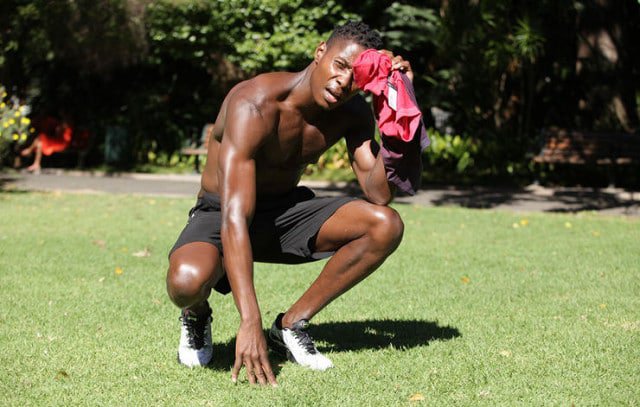
Knowing the symptoms of EHI and paying attention to your body are extremely important if you want to run safely in the heat. It’s easy to brush off a headache, or attribute weakness and fatigue during a run to something like not getting enough sleep the night before, but your situation may be more serious than that.
Headache, dizziness, nausea, fatigue, and lightheadedness are all telltale signs of heat exhaustion according to Casa, whos is also the CEO of the Korey Stringer Institute, an exertional heat stroke prevention institute. Becoming disoriented or blacking out are both signs of heatstroke, which is a much more serious – even fatal – condition that requires immediate medical attention.
If you find yourself possibly suffering from heat exhaustion, Bergeron advises stopping what you’re doing and moving to a shaded or air-conditioned area immediately. Remove any excess clothing, lay flat on your back with your legs elevated, re-hydrate, and wait at least a day before working out again.
Run With a Buddy
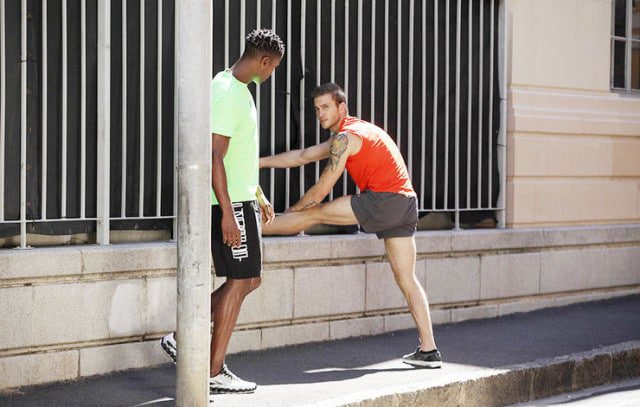
Group workouts can be great, and even just having one other person to talk to makes a run more fun. But running with others is good for safety reasons as well, especially when running in the heat.
Bergeron, who doubles as president and CEO of Youth Sports of the Americas – a group that promotes health and safe exercise for children – suggests always making sure someone is there in case anything goes wrong. Your buddy can also be the voice of reason those times when you want to keep going, but doing so maybe wouldn’t be the best idea.
Drink Enough Water
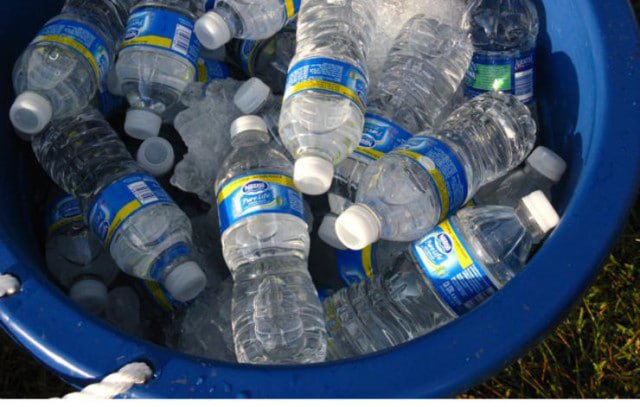
While research suggests you may not need to replace every drop of sweat as soon as you sweat it, staying hydrated is still important to staying healthy, especially when you’re working out on a scorching day.
The three key factors that determine how much fluid you need, says Casa, are the intensity of your workout, environmental conditions, and your weight. For example, if an offensive lineman loses 3 litres of water in the same time a cyclist might only lose two litres, that doesn’t mean the football player is more dehydrated.
Bergeron generally recommends drinking about 470-600 millilitres of fluid per half kilo of body weight lost during exercise. It’s important to spread this out throughout the day and not consume it all at once if your body’s water deficit is large. It’s just as important not to wait to drink until you’re thirsty, as that’s a sign you’re already slightly dehydrated. And while thirst isn’t always the best indicator, you can always gauge whether you need to drink more by the color of your urine – if it’s pale yellow or lighter, you’re okay. Any darker, and you should drink more.
Run at the Right Time
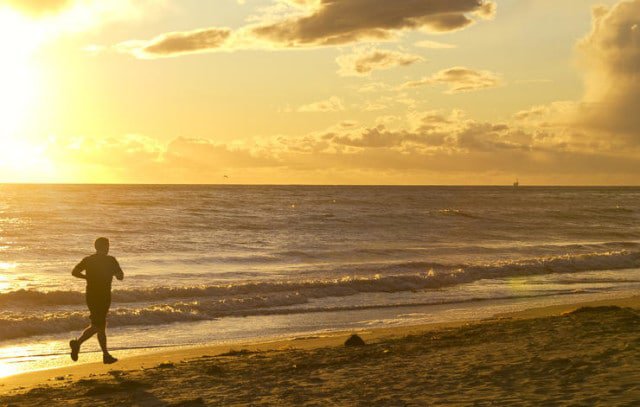
Working out early in the morning or late in the evening is best during the summer since it won’t be as hot outside, and daylight is more widely available. This time frame can fit perfectly with most people’s work schedules: If you don’t feel like going for a run at 6 a.m. before work (we understand completely), you can do it in the evening when you come home. (And for those on the night shift, you can finally work out outdoors when you wake up!)
But sometimes, afternoon runs are inevitable. If you typically schedule your runs at lunch, Casa says you need to be training in that type of heat all the time so you’re used to it. With that said, work your way up to it – don’t just start doing intense workouts in the sweltering heat from the start. It’s okay to take breaks and go slow.
Wear the Right Clothing
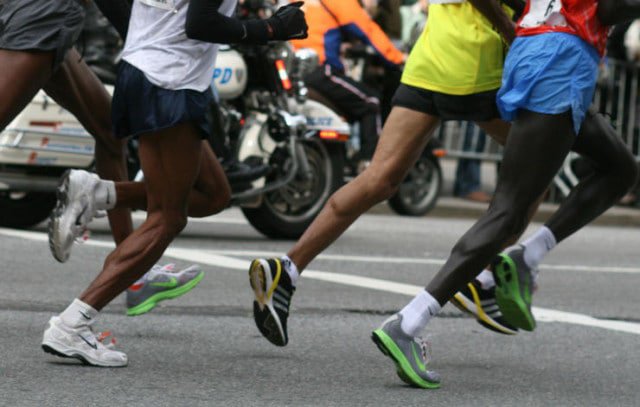
It’s important to fill your wardrobe with clothes that keep you cool and dry on days where it may feel like you’ve taken up permanent residence on the sun. Bergeron advises wearing items that are lightweight, breathable, and that protect your skin from UV radiation. Dry-fit clothing, which helps wick moisture and prevents the buildup of excess body heat, is also a great option.
Eat the Right Food

Fueling your body with foods that won’t dehydrate you is crucial when doing any type of activity on a hot day. Bergeron recommends avoiding foods that are high in fat and protein before exercising since they require time and energy to digest. As you exercise and your body heats up, blood flow to the GI tract decreases, which makes digestion more difficult and may cause nausea.
Instead, aim for hydrating foods that have high water content. Apples, melons, cucumbers, berries, grapefruit, avocado, and lettuce, among others, will all cool your body and keep you hydrated. But don’t worry: You can always have that big bowl of pasta you can’t stop thinking about during recovery.

